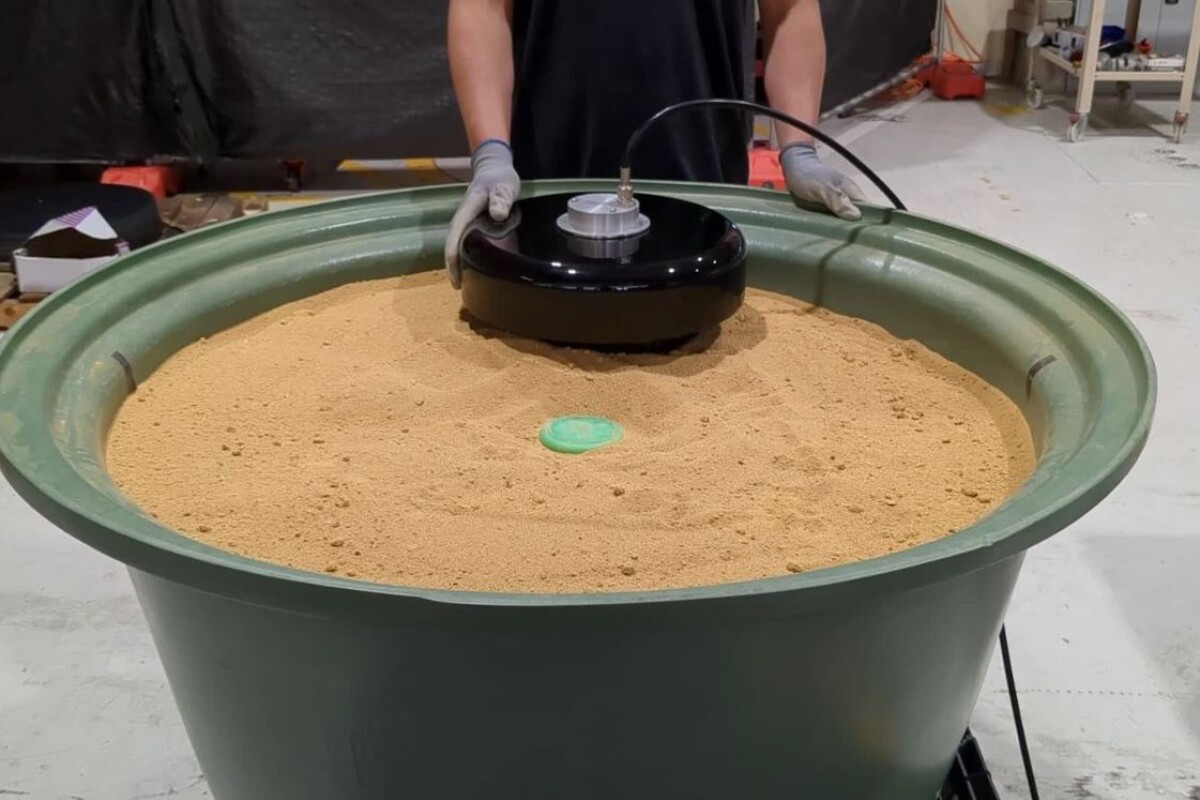While metal detectors are useful for detecting land mines, they can be fooled by buried metallic debris … plus some mines don't contain any metal. A new system is claimed to work better, by reading the unique molecular signature of the explosives used in mines.
Developed by scientists at Australia's CSIRO research institute, the technology is known as MRread – the "MR" stands for Magnetic Resonance.
Users start by placing a handheld transceiver device on the ground. That unit proceeds to transmit pulsed radio frequency waves down into the soil. Those waves are tuned to resonate with targeted crystalline compounds used in explosives.
If any of those compounds are present in the ground, the radio waves will cause their molecules to vibrate at a specific frequency. That unique "echo" signal is detected by the device, which alerts its user to the presence of a mine – the greater the magnitude of the echo, the greater the amount of explosives present.
Unlike some other mine-detection systems, MRead doesn't base its readings on object size or density, which can vary widely between different types of mines. And unlike metal detectors, it isn't thrown off by underground metallic clutter such as shrapnel and bottle caps.
In partnership with tech development firm RFC Ambrian, CSIRO has formed the MRead spinoff company to manufacture and distribute the technology. Nonprofit group The HALO Trust will be the first client to use the device, starting next year in Southeast Asia.
"The magnetic resonance landmine detection technology will have profound impact on areas recovering from and currently experiencing hardship and danger from uncleared minefields," said John Shanahan, managing director of MRead. "These enduring explosive remnants of war inhibit freedom of movement, limit access to food, water, schools, hospitals, and shelter that jeopardizes the safe recovery and return of civilian populations."




